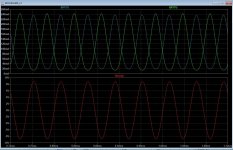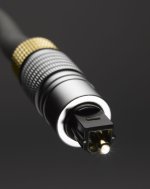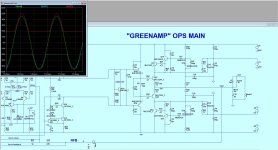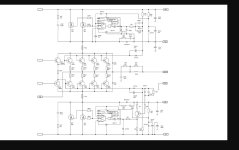Model number ? Arcam sa-10/20 ? Class G with high /low rails.
When running low rail it could be running mostly A , crossing into AB at the high rail.
PS - even before it threw it's pix at Google , easily ID'ed as a class G.
NICE clean layout !!
Even a big class AB with many parallel devices can be biased to do the first 5W in full A.
OS
When running low rail it could be running mostly A , crossing into AB at the high rail.
PS - even before it threw it's pix at Google , easily ID'ed as a class G.
NICE clean layout !!
Even a big class AB with many parallel devices can be biased to do the first 5W in full A.
OS
Yes, correct. It's my SA20 (well, the one in the photo isn't). I have a lot to learn. I would have thought the heat sink is too small for proper Class A operation, even if it is only for a watt or two?
Last edited:
Nah , at low rail , just 1 pair of those tiny devices can't dissipate much . Low rail is only 25-30V (smaller PS caps=35V).Yes, correct. It's my SA20. I have a lot to learn. I would have thought the heat sink is too small for proper Class A operation, even if it is only for a watt or two?
That Arcam might have a active bias control.
I have fooled around with a opto- switch Vbe control on my OP stages.
Just short of Gm doubling with a low input , more active (average) content backs the Vbe down to 70mA per device. PIC
controlled where even a thermal event will switch the Vbe into "normal" mode !
Edit - Class G splits the Vceo in half , usually doubling SOA and halving dissipation. This is why some class G pro-amp's can
rate a 4 device unit at >300W !
OS
Last edited:
Am I correct in assuming that what you are saying ostripper is that the amplifier may be biased towards Class A but not actually operating as such?
At low volumes OP devices never shut off - class A. At all volumes , or a very dynamic volume it switches between classes.Am I correct in assuming that what you are saying ostripper is that the amplifier may be biased towards Class A but not actually operating as such?
Even my little sonance 60W is most likely full A when I watch low dynamic range (compressed) streaming TV.
Any digitally recorded modern FLAC will push it AB.
Class G is different , it describes the operation of a switched higher voltage semi pair's operation. At low volumes , it is just class A.
At higher volumes , it is both AB and G.
OS
https://www.diyaudio.com/community/threads/greenamp-modulated-class-g-output.332657/
There ya go - It works , but the complexity vs. performance had "diminishing returns" for a 100W amp.
If I had to build 1KW , it could work. I'd just use a Hypex uCD1200 !!!
OS
There ya go - It works , but the complexity vs. performance had "diminishing returns" for a 100W amp.
If I had to build 1KW , it could work. I'd just use a Hypex uCD1200 !!!
OS
Attachments
That is a lot of information, most of which goes straight over my head. I will try and work my way slowly through your link/thread. Thanks ostripper.
Then there is switching G/H class. H is the one above. Pro-amp's use a chip + mosfet (true G).
Yes , they even make a IC that determines when to "fire" the high rail MOSFET.
https://solderingmind.com/class-h-audio-amplifier/
Yeah , the IR2117 (now obsolete) ... is the chip.
Actually , you have a nice amp - but class G is obsolete. D is the way for those power hungry subwoofers.
OS
Yes , they even make a IC that determines when to "fire" the high rail MOSFET.
https://solderingmind.com/class-h-audio-amplifier/
Yeah , the IR2117 (now obsolete) ... is the chip.
Actually , you have a nice amp - but class G is obsolete. D is the way for those power hungry subwoofers.
OS
Attachments
🙂Oh , nice. Sabre DAC - would love to stick my "lazer phallis" into it.
I have heard and read much about you yet have little knowledge about what exactly is involved. ThanksYes.
If it is possible, could someone mark out the sections responsible for the high and low rails in the photo please perhaps in colour coding? Thank you in advance.
- Home
- Amplifiers
- Solid State
- Is it possible this amplifier puts anything out in true Class A?



